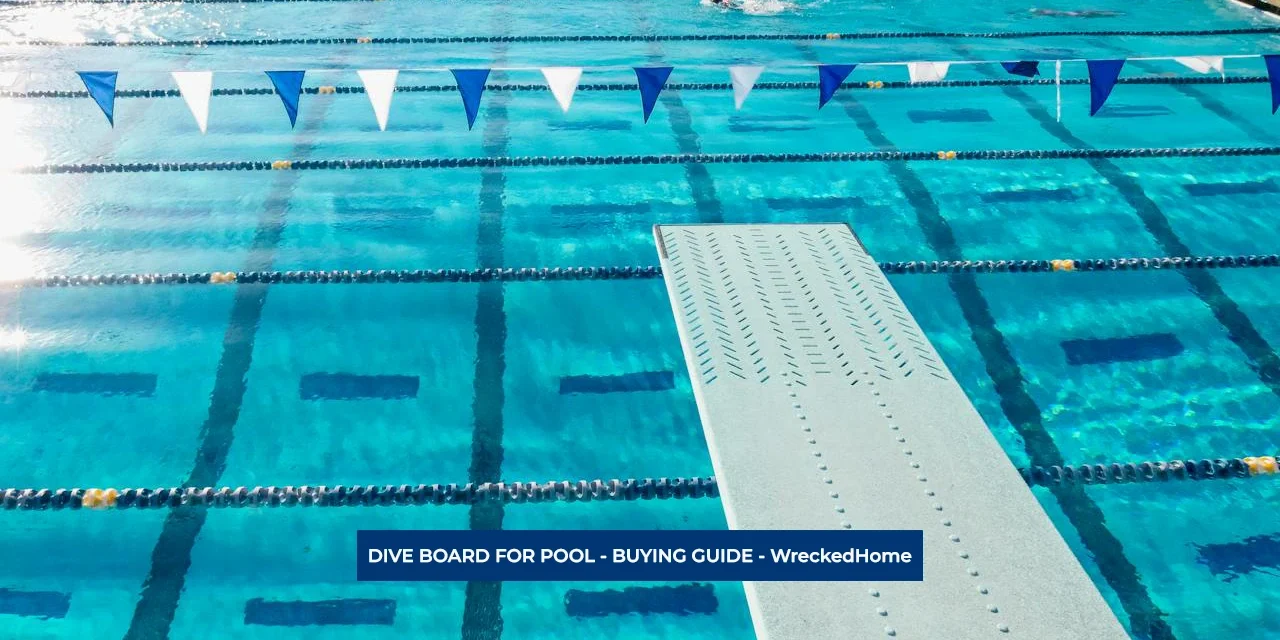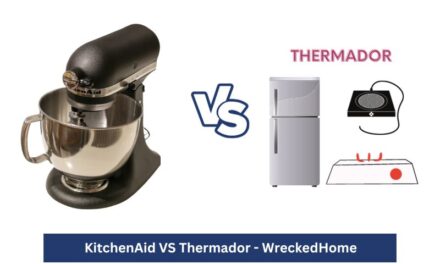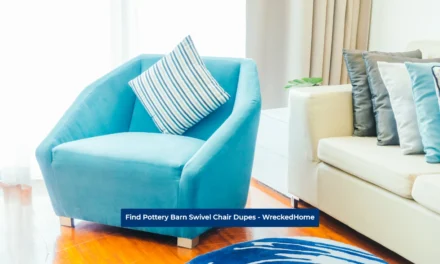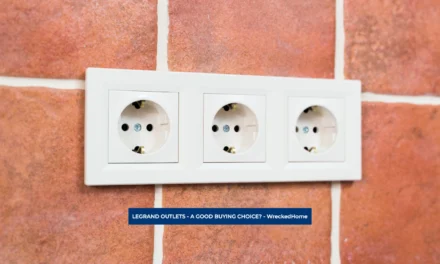When we think about backyard leisure, the dive board for pool is a great source of enjoyment. These spring-loaded or base-mounted platforms aren’t just a poolside accessory; they also make your swimming journey pleasant.
However, all diving boards aren’t created equal. Making a selection on a new diving board is difficult for any homeowner. There are factors that you must consider first. These include safety, durability, and compatibility to your pool. Please keep all of these in mind before making a final choice. A poorly chosen board can turn a delightful dive into a terrible experience.
In this article, we’ll plunge into the world of dive boards to make your poolside adventures more enjoyable. By navigating the depths of materials, safety features, and installation intricacies you can make a better informed decision.
Get ready to dive into this comprehensive exploration of the dive board for pool.
What are Dive Boards for pool?
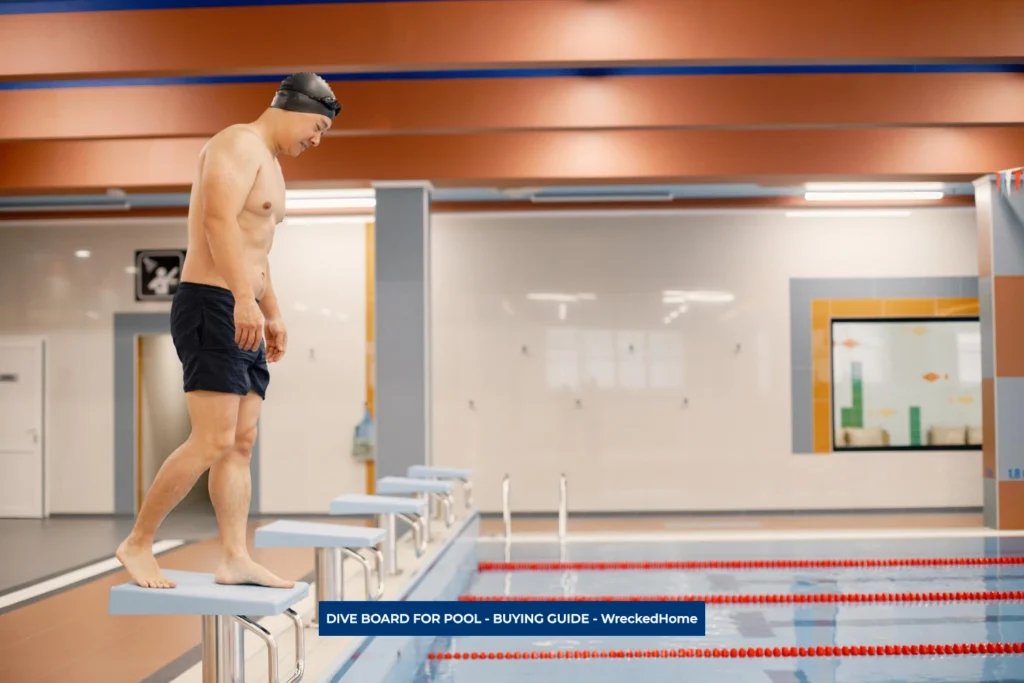
Dive boards are dynamic platforms that are positioned at the edge of pools and offer a thrilling launch pad for pool adventures. There are two primary types, each boasting unique characteristics.
- Spring-Mounted Dive Boards: One of the most common types of dive board for pool that is buoyed by a spring mechanism, adding an extra bounce to your dive. The material choices for spring-mounted boards come in three types:
- Aluminum: Aluminum is well known for its lightweight nature and corrosion resistance.
- Fiberglass: With its durable nature, it provides a smooth surface. Due this this, it is less prone to wear and tear.
- Composite: It is a combination of different materials used to provide balance of strength and flexibility.
- Base-Mounted Dive Boards: Anchored directly to the pool deck, base-mounted dive boards are known because of their sturdy nature. Material options for base mounted dive boards include:
- Wood: It offers a classic aesthetic that can harmonize with various pool designs.
- Stone: Infusing a touch of luxury, stone dive boards are often known for upscale pools capes.
- Concrete: A robust option, favored for its durability and adaptability for enjoyable environment.
Understanding the distinctions between these dive board types allows you to tailor your choice according to your preferences. But, you have to also consider the specific demands of your pool and its surroundings.
Choosing the Right Dive Board for Your Pool
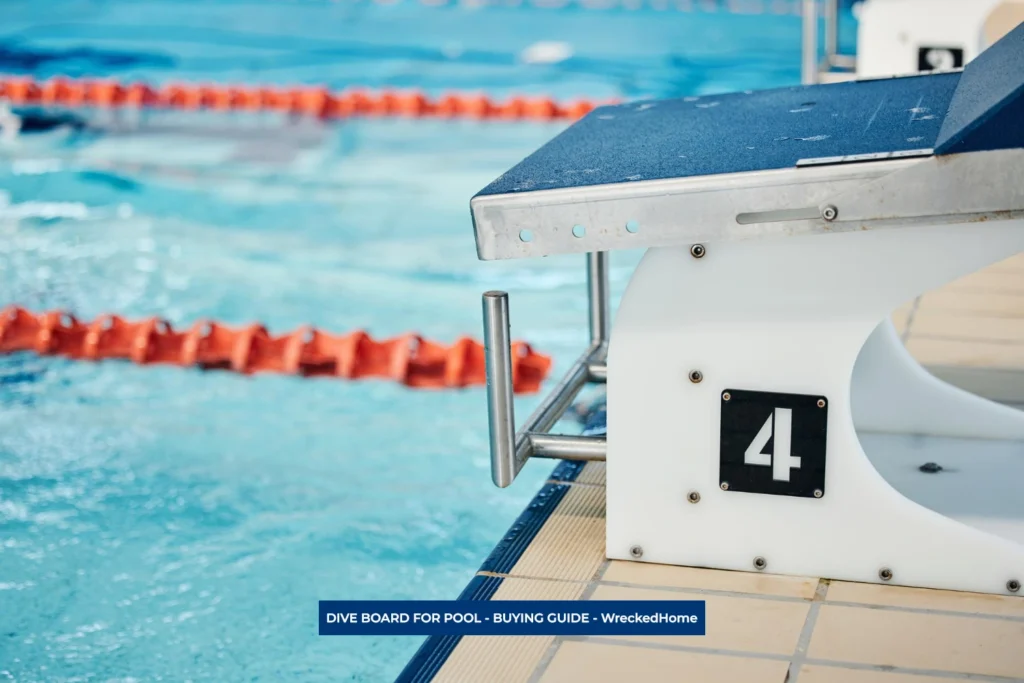
When selecting a dive board for pool, there are several factors that you need to consider. There are six key considerations to ensure you make a well-informed decision. Your final choice should align with both your preferences and the characteristics of your pool.
1. Assessing Pool Size and Depth
The dimensions of your pool are important to know in choosing a suitable dive board. Larger size pools may benefit from longer boards, while compact pools require a higher proportional size.
Equally crucial, you should understand the depth of your pool and focus on the recommend height and weight. If you ignore these guidelines then you compromise on safety and diminish the overall diving experience.
Good Size, Dimensions, and Weight Considerations:
- Pool Dimensions: The nationwide average for a typical diving pool is approximately 17′ x 34′ or 100 perimeter feet.
- Tower Structure: If you have a diving tower, then there are boards with levels of 1m, 3m, 5m, 7.5m, and 10m, providing a diverse range of diving experiences.
2. Budget Considerations
Dive boards come in a range of price points, therefore your budget plays an important role. You don’t always need to choose the more affordable option. It’s important to strike a balance between cost and quality. Investing in a well-constructed dive board ensures longevity, robustness, and adherence to safety standards. All of these ensure that your pool experience is amazing.
3. Brand Reputation and Reviews
Before committing to a specific dive board, research the reputation of the brand and check the user reviews. Reputable manufacturers prioritize safety, design, and durability that you can ensure with positive feedback and any common concerns that rise by users.
D. Additional Features
Beyond the primary function of facilitating dives, there are various features that dive boards offer. These are
- Color Options: Choose a color that complements your pool’s design and give a vibrant touch.
- Design Elements: Some dive boards offer unique designs or customization features to make your pool theme more cohesive.
- Grip and Texture: A non-slip surface is crucial for safety and therefore assess the grip of your dive board for a comfortable experience.
- Flexibility: Some dive boards are known for flexibility levels. This feature can cater to different user preferences and diving styles.
- Ease of Maintenance: Opt for boards with materials that are easy to clean and resist wear & tear.
Visit our store for 10% off our Tools here.
E. Installation Requirements
There are varying installation requirements according to the dive board. Some may necessitate professional installation, while others require less maintenance. Consider your comfort level with installation processes and check the availability of an installer in your area.
F. Local Regulations and Safety Standards
Before finalizing your choice, familiarize yourself with local regulations and ensure safety standards. Certain jurisdictions may have specific requirements for pool equipment, including dive boards. Making sure your product meets these standards is essential to guarantee a safe and legally sound pool setup.
By thoroughly considering these factors, you’ll be equipped to select a dive board for pool that aligns with your preferences. By ensuring a safe, enjoyable, and aesthetically pleasing board you ensure a great addition to your aquatic haven.
Maintenance Tips
You need to pay attention to maintenance and care for ensuring its longevity, safety, and continued enjoyment. Here are eight key tips to keep your dive board for pool in top-notch condition:
- Regular Cleaning: To prolong life span try to remove debris, algae, and any other contaminants. Use a soft brush or sponge with mild soap to prevent any damaging. It keeps the look of the board pristine but also prevents slippery surfaces that could pose safety risks.
- Inspect for Wear and Tear: Conduct routine inspections for signs of wear and tear, like cracks and damaging. Addressing these issues promptly keeps it well maintained and prevents further damaging.
- Protect Against UV Damage: If your dive board is exposed to direct sunlight, then prefer one with UV-protective coatings or covers. Prolonged sun exposure can cause fading and deterioration of materials. UV protection measures keep the structural appearance maintained.
- Tighten Bolts and Hardware: Periodically check and tighten any bolts or hardware that tightens the dive board to the pool deck. Loose fasteners can compromise the stability and safety of the board. Use the appropriate tools to ensure a secure and stable installation.
- Avoid Harsh Chemicals: Try to avoid using harsh chemicals or abrasive cleaners on the dive board, as these can damage the surface. If you use them then it compromises on its structural integrity. Stick to mild, pool-friendly cleaning solutions to protect the materials.
- Address Rust Issues: If your dive board has metal components, then look for rusting. Address rust spots promptly by sanding and applying rust-resistant paint. This prevents corrosion and extends the lifespan of the board especially in humid environment.
- Winter Protection: In colder climates, you need to take care of your dive board during the winter months. This may include covering it with a weatherproof tarp or removing it to store it in indoor environment. Protecting the board from extreme weather conditions is helpful to extend life.
- Follow Manufacturer Guidelines: Always adhere to the maintenance guidelines that are provided by the manufacturer. These guidelines are tailored to the specific materials and design of your dive board. You need to follow manufacturer recommendations that you are caring for your board in a manner that preserves its quality and safety features.
By incorporating these maintenance tips into your routine, you can extend the life of your dive board. It is source of enjoyable pool experience for you and your guests.
Conclusion
In the grand tapestry of poolside pleasures, the dive board for pool is a source of aquatic joy. It’s important to choose a dive board that ensures commitment to safety, durability, and an enhanced swimming experience.
From assessing pool size and to brand reputations every aspect plays a pivotal role.
Remember, the dive board isn’t just a platform for dives—it is a way of pleasure. Through informed decisions and careful maintenance, you can maintain an aquatic symphony of splashes and laughter.
So, as you embark on this journey, you will be wise to make an informed decision. Dive into the world of possibilities, and explore the aquatic journey.
For any repairs, installations, builds, or questions; We recommend you to hire a professional. Find A Pro Near You Here!
FAQs
What is a pool diving board called?
A pool diving board is commonly referred to as a springboard or diving board that is source of aquatic journey. It serves as diving base that utilizes a linear flex-spring, specifically of the cantilever type.
What is a standard diving board?
The standard diving board typically ranges from six to eight feet in length that based on pool size. While exceptionally large or deep pools might accommodate from 6 to 10 feet for residential pools. Competitive divers often opt for longer dive board for pool.
What material is used for diving boards?
Diving boards are made up of different material including wood, fiberglass, and carbon fiber. Wood boards are the heaviest and most economical, while the fiberglass boards offer a lighter alternative with a higher cost.
What is the weight limit on a diving board?
The weight limit on a diving board varies on the basis of design and manufacturer. For instance, a reputable manufacturer like SR Smith may offer boards that can bear 250 lbs to 400 lbs. It’s crucial to inquire about the specific weight limit for each brand of different diving boards.
Thumbnail by Kindel Media

